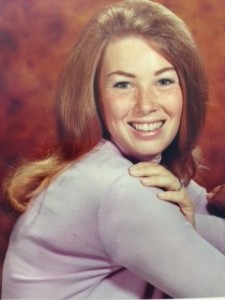E-D-C Really? A Brief History of the Yamaha Method
I’ve been teaching the Yamaha method since the 1970s, and it’s had many makeovers since I started. Here is a brief history of the Yamaha method, and glimpse of what it used to be like to teach back then.
It’s crazy to look back and remember that yes, E D C was the final goal of Book 1 of the Musical Merry Go Round back in 1970 when I taught my first Yamaha class. At the end of one semester the children played E D C along with 3 Blind Mice. We used to use letter names! So, you might be wondering why did it change, or why did Yamaha stop using letter names and switch solfege (MI RE DO)?
Well, after several years of the U.S. using letter names to teach young children music, Yamaha noticed that the U.S. students did not sing well, did not play well and did not seem to be getting the ear training that they were supposed to get. That summer (1980 I think) they informed us that we were switching to fixed “do”. We struggled, we protested, but one year later, our students could sing like champs and were singing and playing so much better than before.
Based on my experience, over the years I have learned to trust Yamaha’s research and development. They are constantly reevaluating and improving existing programs and introducing new ones. I have been part of 4 revisions of the Junior Music Course program, each one more effective and fun than the last. And I have seen the introduction of many new courses: Junior Step Course, Music Wonderland and Junior Ensemble Course.

Each one is well designed, full of engaging music and appropriate for teaching.
So now…mi re do (E D C) is introduced in week 3! By the end of the first semester children can play whole songs with both their left and right hands and we’ve ‘ridden’ a roller coaster, jumped with frogs, danced the minuet with the strawberry dancers and sung in a parade.
What a difference a “Do” made.


Hello! I am so glad to find someone who remembers the Yamaha Music Academy program from as far back as the 70s. My brother and I both attended classes and they were fantastic. I’ve been on a scavenger hunt for the last few decades trying to find the book we used. I know Piano Promenade was one of them but the firs came with our blue zippered bags and had a flexi disc with instrumental versions of “I’ve been working on the railroad”, “Cuckoo”, and “Perot pong ping” (I think). Do you have any idea what the book title might have been? Was there a disc included? This would have been in 1974-1975. Warmest regards -JE
Are you sure you meant “fixed do”? That means “do” is always C. Therefore, tonality can get really mixed up! what about “Happy Birthday”? Really hard to switch that one around. “Moveable Do” places the TONIC NOTE of any key as DO.
Yes! Yamaha Music Education System is based on fixed do where C is always DO. Our students start as young as three-years-old so that they can develop their musical ear training. Yamaha has been studying music education for over 50 years and found that this early exposure is key to developing a musical ear. The period of a child’s development ages 3-7 is marked by acute hearing – this is all to help them develop their aural language. Music is taught in the same way a child would learn their spoken language and therefore makes them “native” speakers. It is in our solfege singing, fixed DO, that our students learn every musical aspect of each piece – of course, pitch and rhythm, but also dynamics, articulation, mood, tempo, character, etc.
Yamaha students’ ears are so developed that there is not a question of tonality in “Happy Birthday” – they know what each pitch sounds like and the relationship never changes! Singing sol to do (G to C) is the same relationship as ti to mi (B to E). Our students don’t have to rely on knowing the rules of the different intervals as it relates in moveable DO, they just know what it’s supposed to sound like. Using fixed DO also makes reading music more consistent and the students experience the key in the way the composer intended, because the pitch matters the most. The solfege is connected to the pitch – DO always sounds the same. Moveable DO can also be quite confusing when dealing with minor keys as there is not a consensus on syllables among educators.
I had a student who transferred from a Yamaha school in China. She had not been in the US very long and did not know very much English yet. She came to the class and brought her books – the exact same ones we had here, just in Chinese! My favorite moment was watching her face light up when we started singing our solfege singing songs – it was amazing! She looked so surprised – somehow we could speak the same language – it was the same! There we were – communicating in our musical language of solfege – for music brings us together!